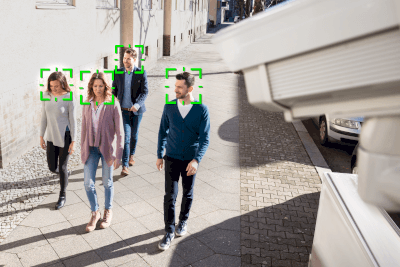What Is an Image Analysis System?
 An image analysis system enables a computer to recognize attributes in images. It involves extracting digital data features from an image and creating algorithms based on human judgment or criteria to automatically make decisions.
An image analysis system enables a computer to recognize attributes in images. It involves extracting digital data features from an image and creating algorithms based on human judgment or criteria to automatically make decisions.
For instance, this technology is used in smartphone photo applications to categorize objects using facial recognition. In social media, image analysis complements text analysis, applying similar analytical functionality to visual content.
Artificial intelligence, including machine learning, has played a crucial role in the development of image analysis since the late 1960s. Today, this technology enables automated decision-making by extracting information from images.
Introduction of Image Analysis Systems
An application of image analysis is the development of chromosome aberration testing methods. This test method uses cultured cells to examine the inducibility of chromosomal aberrations by chemicals, predicting the initial process of carcinogenesis.
While microorganism-based tests are common for detecting mutagens in water, mammalian cultured cells are preferred for more accurate human risk assessment. Image analysis of chromosome aberrations in these cells provides objectivity to test results.
However, the advancement in image analysis technology has outpaced the development of analytical methods, making research in this area vital.
Advantages and Disadvantages of Image Analysis Systems
Advantages of image analysis systems include increased productivity, improved working conditions, and reduced labor costs. For example, incorporating these systems in inspection processes can identify defects without human intervention, contributing to workplace safety and reducing quality errors due to human oversight.
Disadvantages include the high initial cost of equipment and the ongoing development of suitable software applications. Despite these challenges, the field’s continual evolution necessitates keeping abreast of emerging products and technologies.
Methods and Types of Image Analysis Systems
Image analysis methods fall into three main categories: image classification, object detection, and image segmentation.
- Image Classification
Involves categorizing contents of an image. Features are extracted to classify images, such as identifying spaces such as dogs, cats, humans, the sky, trees, etc. - Object Detection
Detects and locates objects within an image. Unlike image classification, which targets a single object, object detection can capture multiple objects. - Image Segmentation
Determines image regions, often requiring a tagging process called annotation to ensure the reliability of the discriminated regions.
There are two main types of image analysis techniques:
- Facial Recognition
Identifies a person’s facial features, which has evolved to include animal face detection and emotion recognition research. - Character Recognition
Reads and identifies text on paper-based documents, converting captured character data into text for functions such as translation.
The Relationship Between AI and Image Analysis Systems
Combining AI with image analysis systems enhances their accuracy and capability. AI-based image analysis systems require extensive image data for learning and feature recognition. The accuracy of these systems improves with the specificity and diversity of the features learned.
Feature detection rates are determined by convolution, which divides the image into quadrants and numerically evaluates the match rate. Pooling then summarizes these features, selecting the highest numerical values among the convolutions.
Performance is evaluated based on the detection rate and match rate. If the results are not satisfactory, the process is revised and updated.
Use of Image Analysis Systems
Image analysis systems have applications like developing techniques for detecting cracks in concrete structures using the Gabor wavelet transform. This mathematical tool, along with digital image processing, offers a more objective and quantitative evaluation than traditional visual inspection surveys. Modifications to the two-dimensional Gabor wavelet transform have proven effective in real-structure crack detection.
These systems are also used in particle analysis for materials like ceramics, resins, and metals, measuring particle count, diameter, distribution, and breakage.